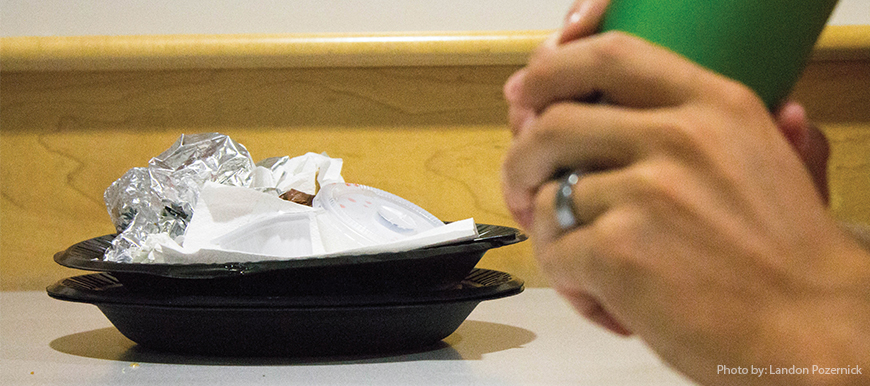Fighting food waste on campus
Americans love to eat, but along with all of the food eaten, there is also food wasted. Utah State University is no exception, despite students’ best efforts.
“We are partnered with the food recovery network,” said Emma Archibald, co-director of the Student Nutrition Access Center (SNAC). “They help us a lot by collecting food from the places that donate to us around campus … Their goal is to reduce food waste on campus and promote waste awareness on campus, especially food waste.”
From donations, the SNAC program hands out food to any students who come in with a need. In addition, SNAC helps programs such as Stuff-A-Bus and also works with the Greek societies to put on fundraisers.
“We get a lot of our bread from the Hub,” Archibald said.“The donations we get go to people who really need it.”
It’s no secret that the Hub sells more than just bread though. But what happens to the food isn’t something everybody may know about.
“We throw away as little as possible while still maintaining high quality of food. With donating to SNAC, this helps a lot on waste,” said Becca Maynard, the Hub’s operations manager.
Often leftover salads, sandwiches and sweets that had been cooked that morning get thrown out. All of which, according to the U.S. Food and Drug Administration (FDA), can be held for a maximum of seven days. Assuming there are only two salads left over every day the HUB is open, that’s about 592 salads thrown away per year.
When looking at how much food is thrown out by the rest of America, this isn’t much by comparison. According to the U.S. Department of Agriculture, “430 billion pounds of the available food supply at the retail and consumer levels goes uneaten.” That’s 430 billion pounds of food that could be given to the one in seven Utah households that struggle with hunger in the Salt Lake Area alone, according to the USDA.
Despite all the edible food being wasted, there are still those out there who are trying to help put that food to good use.
“We are in charge of Stuff-A-Bus, and we plan on driving around to communities every Monday in the month of November to try and collect food for Cache Community Pantry so that families have food for Thanksgiving and Christmas,” Archibald said.
Students have suggestions on how USU could cut back on food waste, as well.
Marissa Lalltim, a political science major, said they should cut down on the portion sizes.
“There is no way I will ever finish this, which means it’s probably going to go to waste,” Lalltim said, looking down at an overflowing bowl of pasta she purchased at the Marketplace.
Lalltim’s friend Rebecca Jones echoed her statement and also suggested that to-go boxes become available for places such as the Junction.
Students struggling to buy food can visit SNAC, which is located in Taggart Student Center, room 333. It is open Tuesday, Wednesdays and Thursday from 3 to 5 p.m. Students are required to bring their student ID, and a grocery bag is optional.
—shaniehoward214@gmail.com

